
Following a summer of increasingly large demonstrations in Mexico City protesting the 1968 Olympics held in Mexico City, the Mexican Armed Forces opened fire on October 2, 1968 on unarmed civilians, killing an undetermined number, in the hundreds. It occurred in the Plaza de las Tres Culturas in the Tlatelolco section of Mexico City. The events are considered part of the Mexican Dirty War, when the government used its forces to suppress political opposition. The massacre occurred 10 days before the Olympics' opening ceremony.

The National Autonomous University of Mexico is a public research university in Mexico. It ranks highly in world rankings based on the university's extensive research and innovation. It is the largest university in Latin America and has one of the biggest campuses in the world. UNAM's main campus in Mexico City, known as Ciudad Universitaria, is a UNESCO World Heritage site that was designed by some of Mexico's best-known architects of the 20th century. Murals in the main campus were painted by some of the most recognized artists in Mexican history, such as Diego Rivera and David Alfaro Siqueiros. In 2016, it had an acceptance rate of only 8%. UNAM generates a number of strong research publications and patents in diverse areas, such as robotics, computer science, mathematics, physics, human-computer interaction, history, philosophy, among others. All Mexican Nobel laureates are either alumni or faculty of UNAM.

Gustavo Díaz Ordaz Bolaños was a Mexican politician and member of the Institutional Revolutionary Party (PRI). He served as the President of Mexico from 1964 to 1970.

The Metropolitan Autonomous University also known as UAM, is a Mexican public university, founded in 1974, with the support of then-President Luis Echeverria Alvarez. The institution aims to be closely linked to the social and human environment
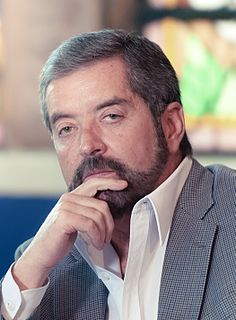
Juan Ramón de la Fuente Ramírez is a Mexican psychiatrist, academician and politician who served as Secretary of Health in the cabinet of President Ernesto Zedillo (1994–1999) and as rector of the National Autonomous University of Mexico (UNAM) from 1999 to 2007. He is currently a professor emeritus of Psychiatry at National Autonomous University of Mexico (UNAM) and Chairs the Board of the Aspen Institute Mexico. On 18 February 2019 he began his term as the Permanent Representative of Mexico to the United Nations.
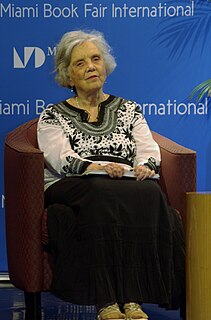
Hélène Elizabeth Louise Amélie Paula Dolores Poniatowska, known professionally as Elena Poniatowska is a French-born Mexican journalist and author, specializing in works on social and political issues focused on those considered to be disenfranchised especially women and the poor. She was born in Paris to upper-class parents, including her mother whose family fled Mexico during the Mexican Revolution. She left France for Mexico when she was ten to escape the Second World War. When she was eighteen and without a university education, she began writing for the newspaper Excélsior, doing interviews and society columns. Despite the lack of opportunity for women from the 1950s to the 1970s, she wrote about social and political issues in newspapers, books in both fiction and nonfiction form. Her best known work is La noche de Tlatelolco about the repression of the 1968 student protests in Mexico City. Although she turned down the title of Princess of Poland that she inherited through her father's royal family, and due to her leftwing views, she has been nicknamed "the Red Princess". She is considered to be "Mexico's grande dame of letters" and is still an active writer.

The Plaza de las Tres Culturas is the main square within the Tlatelolco neighborhood of Mexico City. The name "Three Cultures" is in recognition of the three periods of Mexican history reflected by buildings in the plaza: pre-Columbian, Spanish colonial, and the independent nation. The plaza, designed by Mexican architect and urbanist Mario Pani, was completed in 1966.
The 1999–2000 strike and shutdown of the UNAM had its origins in the January 1999 announcement by its latest rector that tuition would increase significantly and graduation requirements would become more restrictive. In response, a large group of students declared a strike and blockaded the main campus to the point of institutional paralysis. The blockades intensified and eventually led to the university's closure, during which there were violent encounters between opposition groups, students, guards and faculty. The crisis led to the eventual resignation of the university's rector and appointment of a new one. Along the way, bloody conflicts resulted in serious injuries and even fatalities on the unlawfully occupied campus. Eventual action by the recently created federal police finally ended the occupation during February 2000.
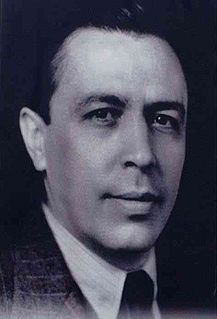
Manuel Gómez Morín was a Mexican politician. He was a founding member of the National Action Party, and one of its theoreticians. Prior to this he was considered a leading figure in Mexican monetary policy, one of the so-called Siete Sabios de México.
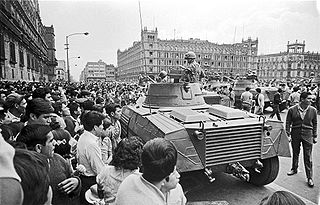
The Mexican Movement of 1968, known as the Movimiento Estudiantil was a social movement that happened in Mexico in 1968. A broad coalition of students from Mexico's leading universities garnered widespread public support for political change in Mexico, particularly since the government had spent large amounts of public funding to build Olympic facilities for the 1968 Olympics in Mexico City.

The School of Engineering at the National Autonomous University of Mexico (UNAM) is the most prestigious engineering school in Latin America and one of the top engineering schools worldwide. At the undergraduate level, it offers thirteen majors and some graduate programs. In fall 2008, the school of engineering had over 10,900 undergraduate students and 1,115 graduate students and postdocs. The School of Engineering offers undergraduate studies in:
Francisco José Barnés de Castro is a Mexican academic and consultant. From 6 January 1997 to 12 November 1999 he served as rector of the National Autonomous University of Mexico (UNAM), the largest university in the Spanish-speaking world.

The Faculty of Sciences at the National Autonomous University of Mexico (UNAM) is the entity where natural and exact science-based majors are taught. It has both undergraduate and graduate studies, some of the former in joint teaching with other faculties, most commonly the Faculty of Engineering. The Faculty of Sciences is the most important science school in the country by the number of students and the quality of its research. Together with the research institutes that surround it, it is considered one of the biggest research complexes of the UNAM.

The Benito Juárez Autonomous University of Oaxaca is a public university located in the city of Oaxaca de Juárez in state of Oaxaca, Mexico.

General elections were held in Mexico on 5 July 1970. The presidential elections were won by Luis Echeverría Álvarez, who received 86.0% of the vote. In the Chamber of Deputies election, the Institutional Revolutionary Party won 178 of the 213 seats, as well as winning all 64 seats in the Senate election. Voter turnout in the legislative elections was 64.4%.

The Corpus Christi Massacre or El Halconazo was a massacre of student demonstrators during the Mexican Dirty War in Mexico City on 10 June 1971, the day of the Corpus Christi festival. Nearly 120 protesters were killed, among them a fourteen-year-old boy.
Eli Eduardo de Gortari was a logician, philosopher of science and engineer.
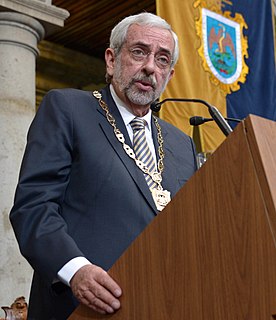
Enrique Luis Graue Wiechers is a Mexican academic and ophthalmologist. He is the rector of the National Autonomous University of Mexico, effective November 17, 2015.

The National Strike Council, the Consejo Nacional de Huelga (CNH) was created on August 2, 1968, composed of the National Autonomous University of Mexico (UNAM), the National Polytechnic Institute (IPN), El Colegio de Mexico, the School of Agriculture of Chapingo, the Universidad Iberoamericana, the Universidad La Salle and other universities in Mexico.

Marcelino Perelló Valls was a figure of the Mexican Student Movement of 1968, and the representative of the School of Sciences of the National Autonomous University of Mexico (UNAM) to the National Strike Council (CNH). Perelló was a member of the Mexican Communist Party (PCM) from 1965 until his death in 2017.


















